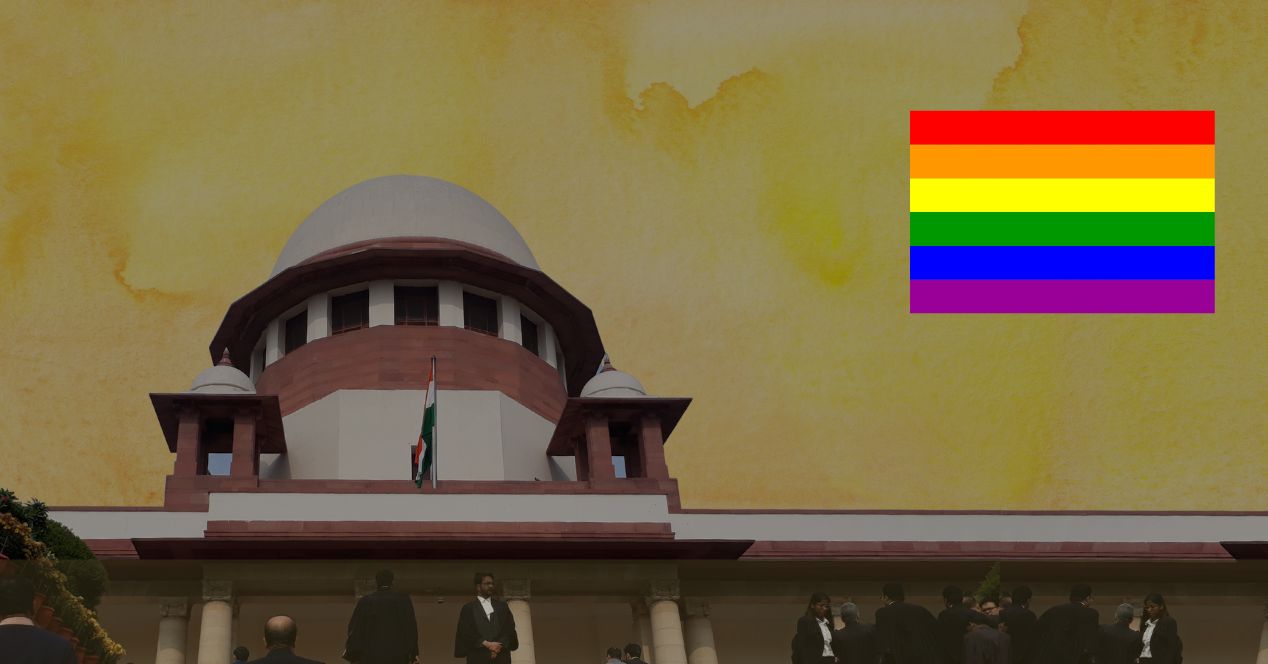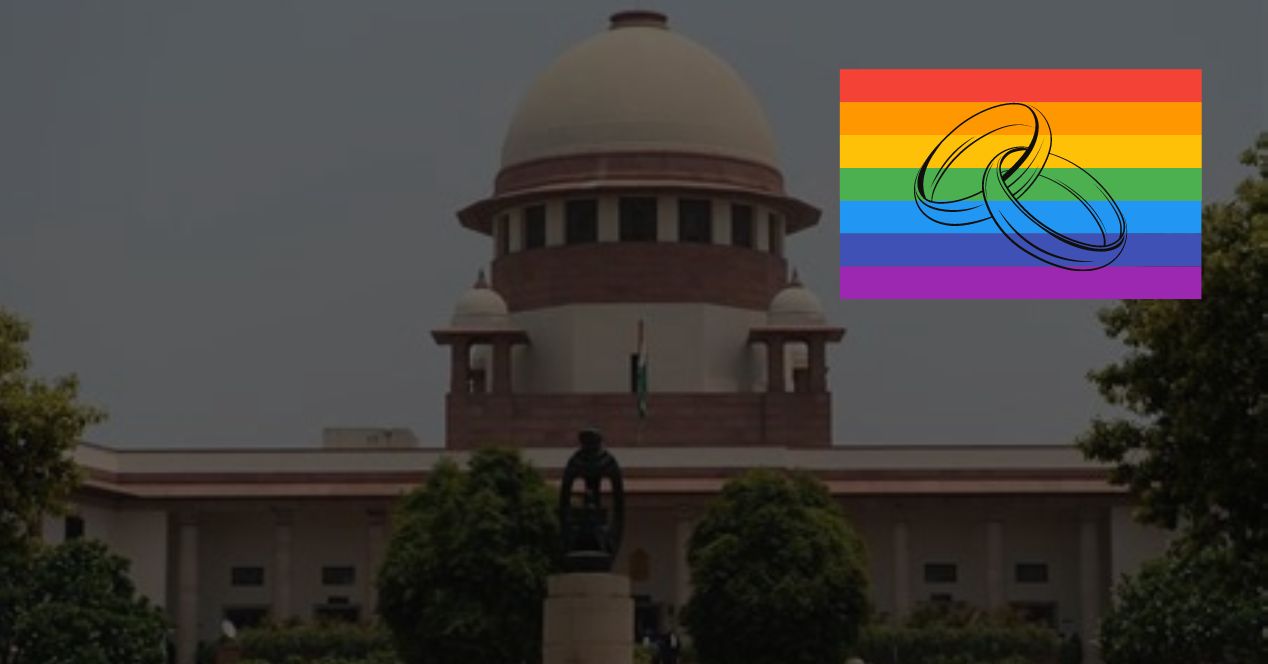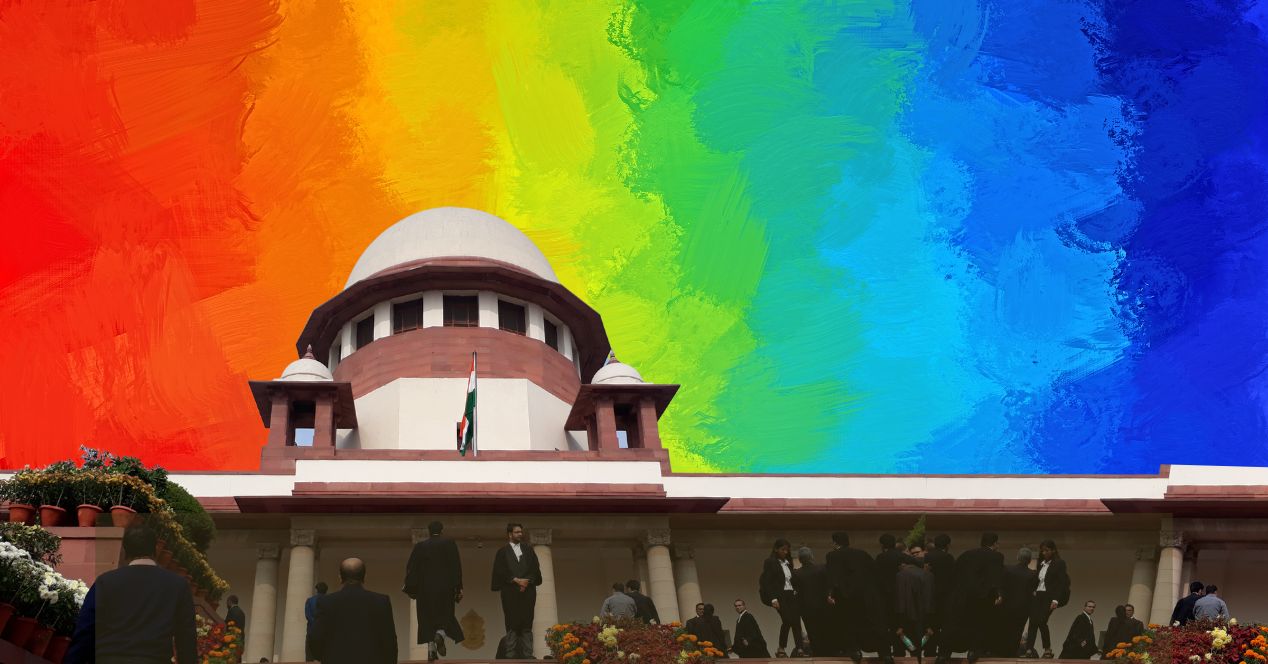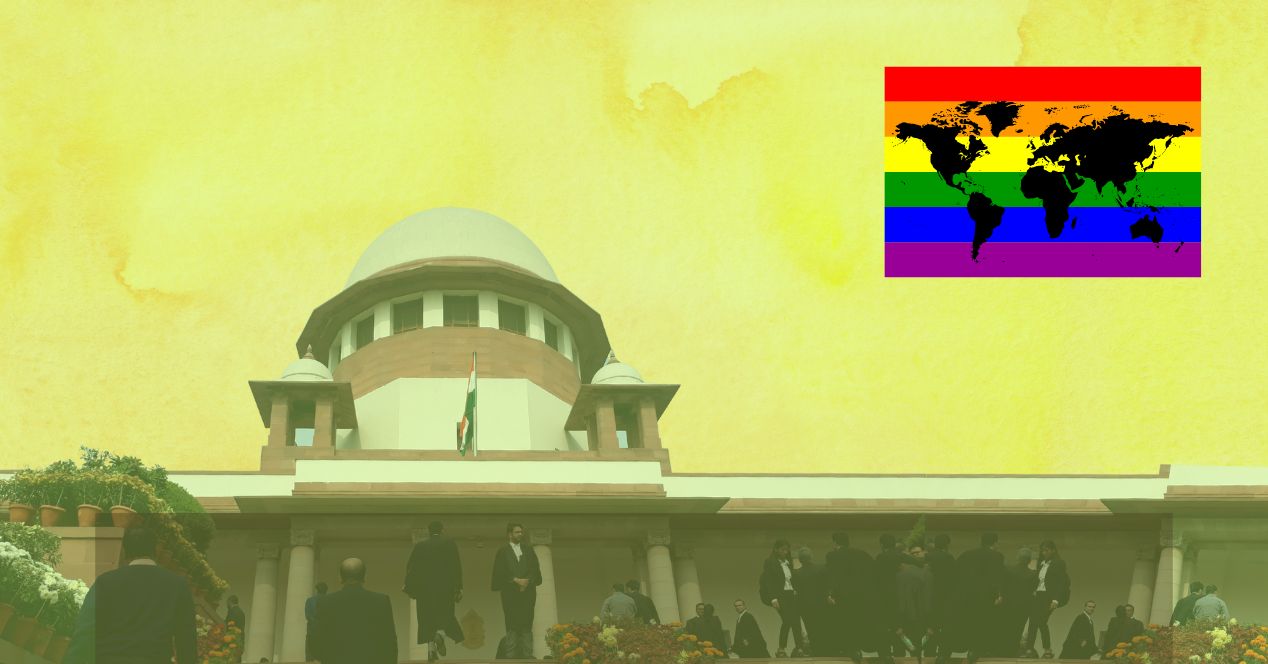Plea for Marriage Equality: Constitution Bench Day #6
Plea for Marriage EqualityJudges: D.Y. Chandrachud CJI, S.K. Kaul J, S.R. Bhat J, Hima Kohli J, P.S. Narasimha J
The CJI-Chandrachud Constitution Bench continued hearing the Union government’s arguments against the recognition of marriage equality for LGBTQIA+ persons.
Yesterday, the petitioners concluded their submissions in favor of recognising marriage equality under the Special Marriage Act, 1954 (SMA). Adv. Karuna Nundy argued that the NALSA (2014) decision has paved the way for the SC to recognise marriage equality. Adv. Arundhati Katju argued that existing personal laws governing marriage have evolved because people filed claims and sought clarifications, and queer couples must be treated equally in this regard. The Union government commenced its arguments through Solicitor General Tushar Mehta. He argued that the right to marry did not justify compelling the State to recognise different kinds of marriages, and that the SMA deliberately excludes LGBTQIA+ relationships from it’s scope.
Background
On November 14th, 2022, two same-sex couples filed writ petitions in the Supreme Court seeking legal recognition of same-sex marriages in India. The petitions were centred around the constitutionality of the Special Marriage Act, 1954 (the Act).
The petitioners argued that Section 4(c) of the Act only recognises marriage between ‘male’ and a ‘female’ persons. This discriminates against same-sex and other queer couples by denying them the same matrimonial benefits as heterosexual couples.
According to petitioners, the non-recognition of same-sex marriage violates the rights to equality, freedom of expression and dignity. They claimed that the SC’s judgements in NALSA vs Union of India (2014) and Navtej Singh Johar vs. Union of India (2018) recognised non-binary gender identities and guaranteed equal rights to homosexual persons. However, since no law regulates queer marriages, queer couples are denied the practical benefits that flow out of marriage such as inheritance, insurance, adoption, etc.
On March 12th, 2023, the Union filed a Counter Affidavit opposing same-sex marriages. They claimed that ‘the notion of marriage itself necessarily and inevitably presupposes a union between two persons of the opposite sex’.
On March 13th, 2023, a 3-Judge Bench led by CJI D.Y. Chandrachud referred the case to be heard by a 5-Judge Constitution Bench as it involved constitutional as well as statutory questions of law.
Petitioner’s Arguments Pave the Way for Recognition of Prohibited Relationships
Mr. Mehta argued that the petitioners were essentially asking for the provisions of the Special Marriage Act, 1954 to be rewritten to suit a particular class of individuals (the LGBTQIA+ community). If the SC accepts the arguments that sexual orientation is a matter of choice, then what is stopping future cases where petitioners seek to legitimise incestual relationships?
First, CJI Chandrachud disputed the claim that sexual orientation was a matter of choice. He highlighted the notion that sexual orientation was ‘immutable’. Second, CJI Chandrachud objected to the idea that the petitioner’s arguments could be extended to incest, calling it ‘far-fetched’. Justice Bhat agreed and pointed out that the State had to have a legitimate interest in order to regulate personal relationships.
Supreme Court Must Deal with Personal Laws, Even if Case is Restricted to Special Marriage Act
Mr. Mehta submitted a list of 160 provisions that would have to be amended if marriage equality was recognised, both within the SMA and in other statutes (personal law and otherwise). He began by referring to the provisions in the SMA that draw a distinction between ‘Full-Blood’ and ‘Half-Blood’ relations. These provisions would become redundant if marriage equality is recognised.
This tied into a larger argument; that the SMA was structured with the idea that marriage would be between a ‘biological, conventional’ man and a ‘biological, conventional’ woman. Similarly, he pointed out the distinction between men and women regarding marriageable age, and the use of ‘bride and bridegroom’ in the provisions regarding declaration of marriage. Even the format for giving notice of marriage under the Second Schedule only recognises binary genders.
Honing in on the effect on personal laws even outside of marriage, Mr. Mehta highlighted Section 19, 20, 21 and 21A of the SMA. These provisions cull out the situations where the Indian Succession Act, 1925 (ISA) or the Hindu Succession Act, 1956 (HSA) will apply. If there is an interfaith marriage, the couple will be governed by the ISA as they will be severed from their family. Further, they will be governed by the HSA if they get married within their community as per Section 21A. Mr. Mehta stated that this entire setup meant that personal laws cannot be disregarded by the SC, as a workable solution will have to be found.
On the same track, the grounds for divorce under the SMA include grounds that are only available to women under the SMA. The petitioners have suggested that, for queer relationships, all the grounds should be available for both members. However, Mr. Mehta pointed out that this would accord additional rights to queer couples while heterosexual couples (specifically heterosexual men) would be restricted despite the SMA being enacted for them.
Mr. Mehta continued to list SMA provisions that gave different rights to women that could not be easily re-interpreted. Alimony, approaching courts, and enforcement of decrees are all provisions that recognise different rights or processes for men and women. He also cautioned the Court against dealing with these issues on a case-to-case basis, stating that these issues would keep arising.
CJI Chandrachud summed up Mr. Mehta’s arguments so far.
- Reinterpreting the SMA would involve substantially rewriting the statute;
- The SC would end up ignoring the language and application of some provisions;
- To reinterpret SMA, provisions of other personal laws would have to be interpreted as well.
Mr. Mehta agreed and added that different classes of people cannot be treated differently under the same enactment. He then listed more provisions from other acts that would become ‘unworkable’ as they were crafted with the understanding of marriage solely between biological men and women.
- Domicile for women under the ISA is dependent on Husband’s place of residence;
- ISA also has provisions specifically recognising widows, widowers, fathers, mothers etc;
- Marriageable age under the HMA which specifies ‘bride and bridegroom’;
- Exception for gifts given without a demand to a ‘bride’ and ‘bridegroom’ under the Dowry Prevention Act, 1961;
- Definitions of ‘Aggrieved persons’ and ‘Respondents’ under the Domestic Violence Act, 2005. These refer solely to women and men respectively;
- Differing method of arrest for women under the Code of Criminal Procedure, 1973;
- Definitions provided for ‘Men’ and ‘Women’ under the Indian Penal Code, 1860.
The Petitioners Misrepresented Ghaidan
The SG referred to the House of Lords in Ghaidan v. Godin-Mendoza (2004). The petitioners had relied on this case to argue that ‘when there is a particular paradigm that applies to the heterosexual group, it is discriminatory to not apply the same to homosexual groups.’ The SG argued that the context of this case was different. It dealt with a situation concerning rental enactment and did not involve the creation of a new ‘social institution’ as the petitioners are seeking in the present case.
Besides, the SG argued that this judgement also stated that the interpretation of a Statute ‘should not be contrary to the intent and tamper with the architecture’ of the Statute. The ‘grain of the law’ must be given effect. Under the SMA, Mr. Mehta claimed, the grain of the law was to recognise heterosexual marriages and therefore, it cannot be tampered with. However, the petitioners left this aspect out of their arguments.
There is No Fundamental Right to Seek Legal Recognition of A Relationship
Mr. Mehta went on to state that the rights to love, cohabit, project sexual orientation and choose a partner were all fundamental rights. However, these rights did not mean that there is a fundamental right to seek legal recognition of relationships such as marriage. An LGBTQIA+ couple could have a ceremony if they wished but they cannot compel the State to legally recognise this marriage.
CJI Chandrached was quick to follow up. ‘Once you say the right to cohabit is a fundamental right, isn’t there a duty on the State to recognise all social incidents this cohabitation finds in the law’? he asked the SG. Responding to the Bench, the SG hinted that it was not part of the Indian tradition to do so. The CJI disagreed. He stated that the carvings on our ancient temples showed the depth of our culture and that resistance to recognising LGBTQIA+ identities was based on Victorian morality. Further, Justice Bhat pointed out that, unlike other countries, there was no prohibition on legal relationships in our country.
The CJI went on to clarify that the Bench recognised its limitations. They were aware that the Court could not enter the realm of the legislative process. However, Indian laws have come a long way. The Transgender Protection Act, 2019, for instance, has a grand vision, homosexuality has been decriminalised under Section 377 of the IPC etc. Therefore, the Court was nudging the Union to keep up with the law and secure cohabitor relationships. Justice Bhat added that recognition need not be in the form of marriage, it can be an association that grants the couple certain rights under the law.
The SG agreed to speak to relevant ministries (such as the Ministry of Social Justice and Developement) and assist the court in addressing the problems faced by LGBTQIA+ couples. However, he stated that decriminalisation did not mean the legal recognition of a new status of relationships. He argued that this was not a violation of the right to equality under Art. 14 of the Constitution as the SC’s judgement in Kedar Nath Bajoria (1953) made it clear that equal protection of laws did not mean that all laws had to be general and universal that the State could not make classifications.
Lastly, the SG cited examples of cases from Thailand, Panama, Peru, Poland, Philippines to show how the Courts in these countries denied legal recognition of LGBTQIA+ marriages.
Other respondents will continue their arguments on May 3rd, 2023.




